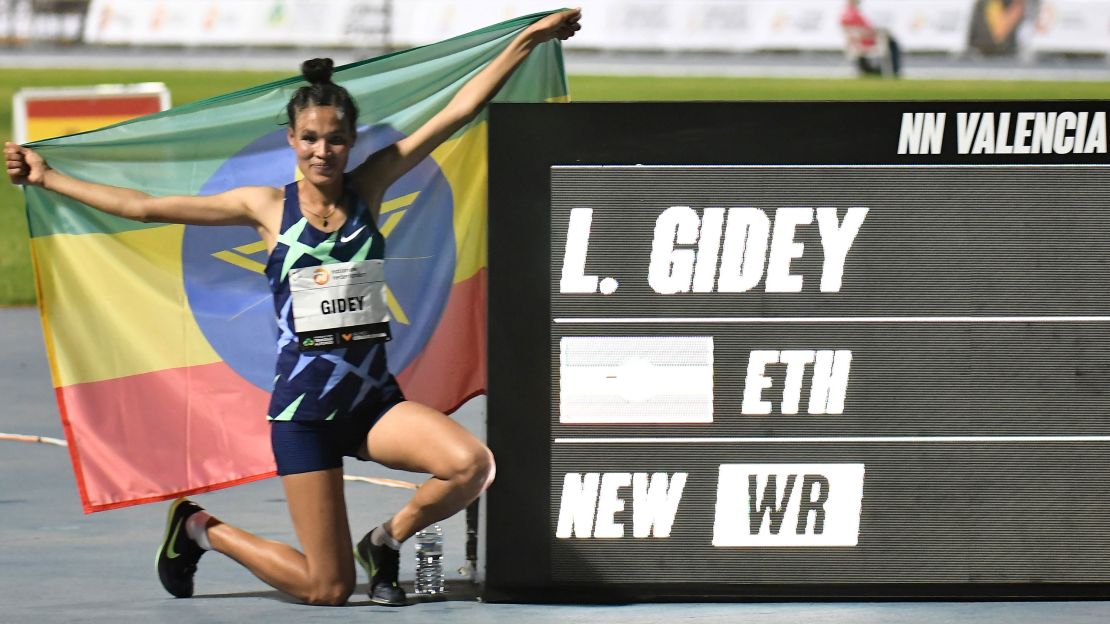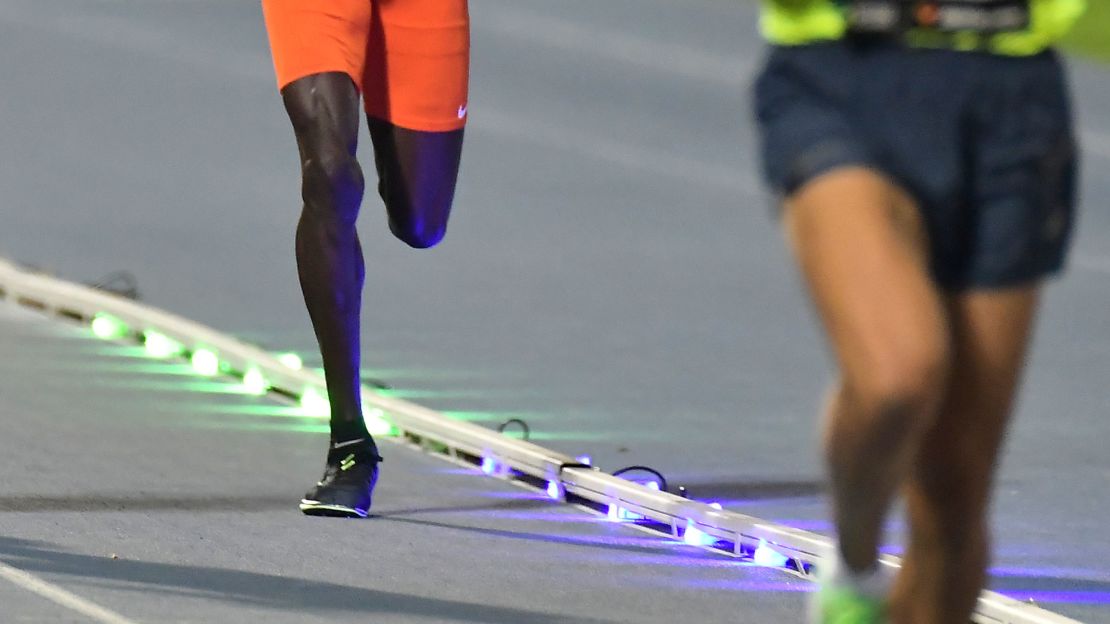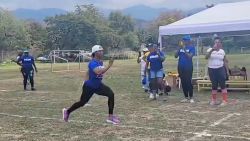Flashing lights on the side of the track – a bit like a disco – and snazzy “made to fly” Nike spikes played a part in delivering two world records in the space of an hour in Valencia, Spain on Wednesday as track and field fans got a glimpse of what the future might hold for the sport.
“World Record Day” certainly lived up to its name as Ethiopia’s Letesenbet Gidey set the fastest time in history for the women’s 5,000 meters after clocking 14 minutes, 6.62 seconds, while Uganda’s Joshua Cheptegei smashed the men’s 10,000m record in 26 minutes, 11.02 seconds.
Gidey, 22, broke Tirunesh Dibaba’s previous record set in 2008 by more than four seconds whilst Cheptegei, 24, shaved over six seconds off Kenenisa Bekele’s previous best set in 2005.
But the Valencia event was not without controversy.
As with Nike’s Air Zoom Alphafly NEXT% shoe – worn by Kenyan long-distance runner Eliud Kipchoge, who ran an unofficial marathon in 1:59:40 in Vienna last October – are the ZoomX Dragonfly spikes giving athletes like Gidey and Cheptegei an unfair advantage?
The shoes have been approved by World Athletics and former athlete Jos Hermens – who represents both Gidey and Cheptegei – says the spikes are just a natural progression in shoe technology.
“Anybody can run in those spikes so there is nothing special. Of course shoes develop, tracks develop, everything develops all the time in any sport,” Hermens told CNN Sport in an interview over the phone.
“Go to Formula One, apparently Mercedes has a better motor than the one from Red Bull and no one makes a problem about that,” added Hermens. “It’s everywhere. I don’t see the problem.”
World Athletics told CNN Sport that the shoes had been commercially available since April 2020 and that the measurements were in line with track shoes across the board.
READ: Kitata shocks and claims London Marathon victory

New technology
Both Gidey and Cheptegei used pacemakers and were also helped by Wavelight technology – flashing lights on the side of the track that provide athletes with an indication of the pace they need to run if they’re to set a world record.
Hermens passionately believes this new technological innovation will be a way of keeping traditional fans interested in track and field, as well as attracting new ones.
“The Wavelight is more for the audience than for the athletes. In the old days, we were yelling as a coach beside the track. It’s Stone Age,” said Hermens, whose NN Running Team organized the Valencia event.
“Now we are all digital and into visual things. A lot of athletics fans have gone, the young people don’t understand athletics so how wonderful is it to say that to break the world record, you have to be in front of the green light?
“It’s not like we stand on the track, put on the lights and we break a world record. The athletes just have to run. We have to get our sport more interesting.”
SPORT Technologies, the company behind Wavelight, referred CNN Sport to Hermens when asked for comment about the innovation, but did say the technology offers the audience a much more in-depth experience
Cheptegei had already broken Bekele’s 5,000m world record in August and Hermens says the Uganda athlete was always on track to set more records having had more time to prepare without Tokyo 2020 to think about after the Olympics was postponed because of the pandemic.
“We are trying to write history,” Cheptegei told reporters after Wednesday’s race. “We want people to know that track is still exciting and we want to give it our all.”
“We live in a difficult situation [with Covid-19] but this event can still give us joy, can still give us hope for tomorrow.”
READ: Olympic organizers reveal plans for scaled-down Tokyo event

‘Everything changes’
Only 400 people, including journalists and staff, were allowed into Valencia’s Turia stadium due to the pandemic but those watching the meet were treated to two remarkable races.
Hermens, who in 1976 set a world record for the longest distance covered in an hour, says the Valencia event will help bring crowds back as he urged track and field to continue innovating.
“Everything changes. We speak on the mobile phone, we go on a Zoom meeting. Everything changes all the time,” he said.
“When I broke the world record in 1976, every 200m I had a lamp. I knew if I saw the lamp burning on the inside of the track then I was behind. If I didn’t see it burning I knew I was on schedule. That was 1976.
“Do we have a few lamp lights burning in the middle of the track in 2020? It’s too ridiculous to even discuss.”
Nike did not immediately respond to CNN’s request for comment.





















